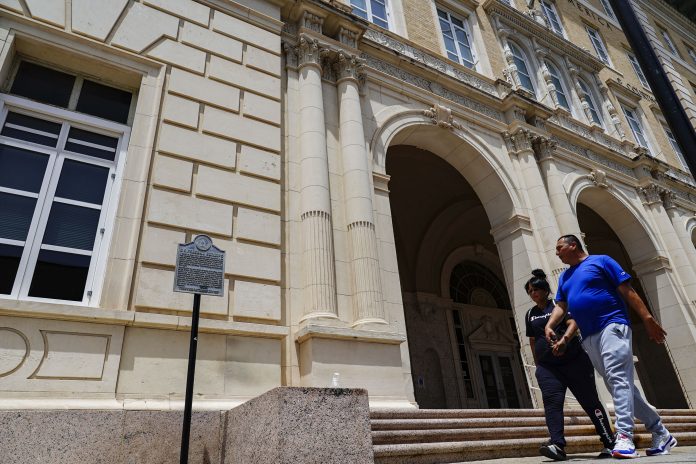
|
Only have a minute? Listen instead
Getting your Trinity Audio player ready...
|
Investments in public safety, infrastructure, community services and employees feature prominently in the city of Brownsville’s Fiscal Year 2025 budget, which operates from Tuesday to Sept. 30, 2025.
The $133.2 million budget is balanced, with a city property tax rate of $0.603504, marking the fourth consecutive year of tax reduction, down from $0.700613 in FY 2019, according to county data.
The city said the budget, in both revenues and expenditures, underscores the city’s “dedication to responsible financial management and the enhancement of quality of life for residents and its employee first approach.”
“The (city’s) budget highlights our commitment to critical infrastructure projects, public safety, and our employees who are committed to our community,” said City Manager Helen Ramirez. “We are investing resources in long-term solutions to further enhance the quality of life and keep Brownsville safe while ensuring we remain a competitive employer in the professional arena.”
The budget includes a 3% cost-of-living adjustment for city employees, a minimum-wage increase from $10.97 to $13.00 an hour, and a “compression adjustment” for employees with 7 or more consecutive years with the city. Compression adjustments are applied when salaries of more recent or lower rank hires have risen close to salaries of employees of higher rank or who have been on the job longer.
The city was able to offer its non-civil-service employees a stipend at the end of FY 2024 — $2,500 for full-time employees and $1,250 for part-time employees — thanks to “conservative budgeting and a healthy sales tax,” according to the city.
The budget includes $89.5 million allocated for personnel services; and another $95.1 million for capital improvement, including $17.2 million for streets and drainage; $6.7 million for public safety, emergency operations and the civic complex; $10.1 million for Brownsville Metro buses; $4.3 million for technology improvements; $4.1 million for sidewalks and hike-and-bike trails; $3.7 million for parks; and $3.2 million for downtown improvements, according to the city.
The breakdown of General Fund expenditures, according to the budget, is 52% for public safety, 24.1% for general government, 8.6% for culture and recreation, 7.7% for public works, 5% for transfers to other funds and 2.5% for public health. The city said the new budget demonstrates its “dedication to fiscal responsibility while enhancing quality of life for Brownsville residents.”
The city’s strong financial management was key to Moody’s assigning a rating of “Aa3” for the city’s upcoming issuance of $23.4 million in Combination Tax and Revenue Certificates of Obligation for various infrastructure projects, according to Alan Guard, deputy city manager and chief financial officer.
In issuing the rating early last month, Moody’s cited the city’s continued economic growth as a “regional economic hub with significant residential and commercial development” and diverse and expanding economic base, putting the city in a position of financial health.
“The City has good liquidity and fund balance reserves, with 50% and 95% of its operating revenue, respectively,” Moody’s said. “The total debt will be manageable, even as the city plans to issue more debt for infrastructure projects.”
“We are committed to maintaining a stable and progressive financial environment, while fostering substantial growth and development throughout the city, internally and externally,” Guard said.



